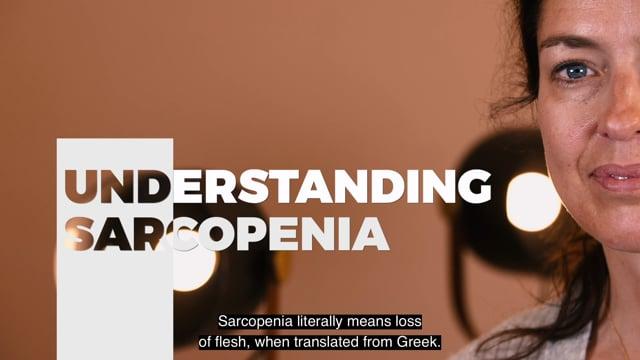
"Zero Restraint" goal for falls prevention
11 May 2021
To control the risk of falls, carers may resort to restraint. However, this delicate practice is not always necessary and can be counterproductive in the management of falls

11 May 2021
To control the risk of falls, carers may resort to restraint. However, this delicate practice is not always necessary and can be counterproductive in the management of falls
Falls are often unavoidable as a result of ageing. They have serious physical and psychological consequences for the elderly and have a major impact on the well-being of the nursing staff.
How to combine patient safety and respect for freedom? Restraint raises many questions for the carer. How to restrain while leaving each person free to make their own choices? Accepting the freedom of movement of our residents often includes accepting risk-taking. This is both a daily and an intractable equation.
Restraint is present in 6 to 17% of hospitals. In the over 65s, it affects 18% to 22% of patients. In the case of dementia, it concerns more than 50% of people. In retirement homes, 49% of residents are affected. Although these figures have been falling over the years, they still affect too many people. This is why many "zero restraint" plans have been implemented, first in Flanders, then in Wallonia.
In addition to chemical restraints, which are used in psychiatry, there are 4 other types of physical restraints:
- Restraints that limit mobility such as restraints or abdominal belts
- Restraints that restrict freedom such as isolation or confinement
- Furniture restraints such as bed rails or chair shelves
- Virtual restraints such as electronic monitoring
It is often in a strong emotional context that a decision is made to install a restraint. Patience and method are the key words.
Above all, the decision must be taken as a team so that the decision is not taken alone. Ideally, restraint requires a medical prescription, even if in Belgium it is considered as a nursing act delegated by the doctor (not requiring a prescription).
It is therefore important to
- To inform the patient and his family. Inform the patient and family. Restraint must be consented to in order to be well experienced
- To identify the triggers of the confusion episode. Pain, such as that of the bladder globe, or polymedication often initiate confusional episodes.
- Look for alternatives and promote calm. This can range from a few kind and spontaneous gestures, to the setting up of well-being workshops.
- Ensure safety, monitor and reassess the need for restraint.
- Choose the appropriate restraint equipment and be trained in its use.
- Monitor the person's physical parameters on a regular basis: nerve compression points, appearance of redness at the attachment points.
- Ensure that the person is hydrated and continence

If restraint was effective, it should reduce the number of falls and injuries. However, this is far from being the case. The number of serious injuries following a fall while the patient is in restraint even increases (17% versus 5%), (Tinetti, 1992).
And when restraint is discontinued, the number of falls tends to increase during a transition period (without the injuries being more serious).
Furthermore, restraint very often leads, especially if prolonged, to a loss of autonomy and an increase in the length of hospital stay (Frengley 1986).
Morbidity
Restraint induces immobility that is harmful to the patient and pressure sores can quickly develop. Immobilisation for one week can lead to a loss of up to 10% of muscle mass. Restraint also leads to loss of bone mass and muscle wasting. This increases the risk of a serious fall.
Other consequences have been reported, such as increased confusion and incontinence.
Mortality
Restraint is responsible for 1 in 1000 deaths in institutions (Miles 1992).
As the severity of injury increases with restraint, the risk of death from injury is increased. Bed rails are often blamed for this.
Caregivers' experiences
Feelings of anxiety, frustration and guilt often accompany the nurse when placing restraints.
Paradoxically, feelings of safety for the nurse are never reported. Restraint is therefore always a risky act, with serious consequences for the resident and heavy responsibility for the nursing staff.
Restraint does not protect against legal proceedings
Here, it is "the need for compliant restraint and monitoring of the patient adapted to his/her condition" that is of primary importance. Restraining patients, yes, in some cases, but with great care and professionalism.
In some residential facilities, restraints are never used.
For this to happen, the carers and the family must be convinced that it can be done without. Other alternatives that are more effective and do not impact on quality of life should be discussed.Restraint monitoring is the key word! With or without restraint, keeping an eye on the patient is the nurse's responsibility.
Early warning of a fall in restraint and direct visualization of what is happening in the room, as provided by the ISA fall detection system, can reduce mortality and morbidity in restrained patients.

Looking for an easy way to install a reliable fall detection solution in your facility? Look no further than Mintt. We have streamlined the installation process to make it hassle-free and efficient.

Falls are a major public health problem, particularly among older people. According to the World Health Organisation (WHO), approximately 28-35% of people over 65 suffer at least one fall yearly.

In this episode of Mintt Academy, Sandra De Breucker, Head of Geriatrics of the Erasmus Hospital tells you more about how to better understand sarcopenia.
This website uses cookies
We use cookies to provide you with a better visitor experience. Our website tracks three levels of cookies, you can go to cookie settings to manage your preferences at any time. You can read more about what cookies are and which cookies we collect in our privacy policy.
Cookie settings
We use cookies to provide you with a better visitor experience. Our website tracks three levels of cookies. You can adjust your preferences at any time. You can read more about what cookies are and which cookies we collect in our privacy policy.
Adjust your preferences
Functional cookies are necessary cookies that ensure that the website functions properly and that your preferences (e.g. language, region) are stored properly.
The cookies we use are: essential cookies, craft cms and vimeo
Analytical cookies allow us to analyze the use of the website and to improve the visitor experience.
The cookies we use are: Google Analytics, LEADforensics and leadinfo
Marketing cookies aim to personalize your experience and send you relevant content and offers on this and other websites.
The cookies we use are: Linkedin Insights, Google ads